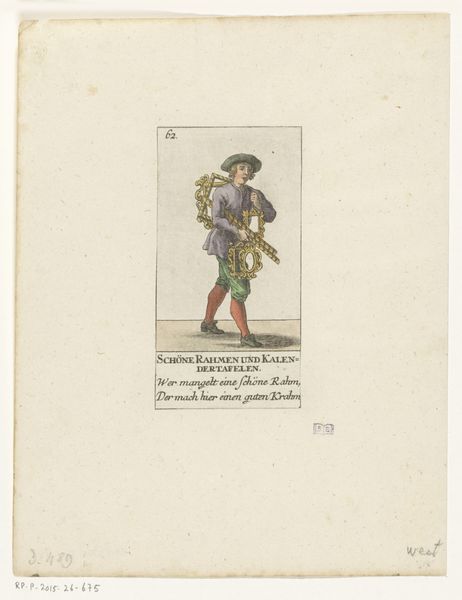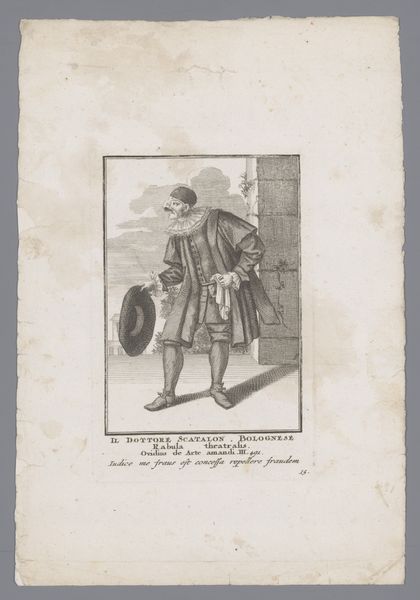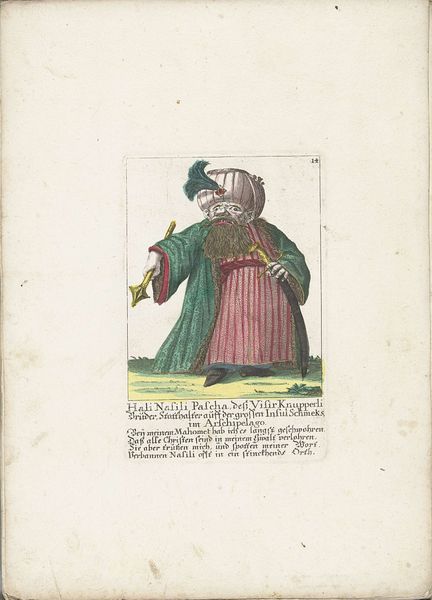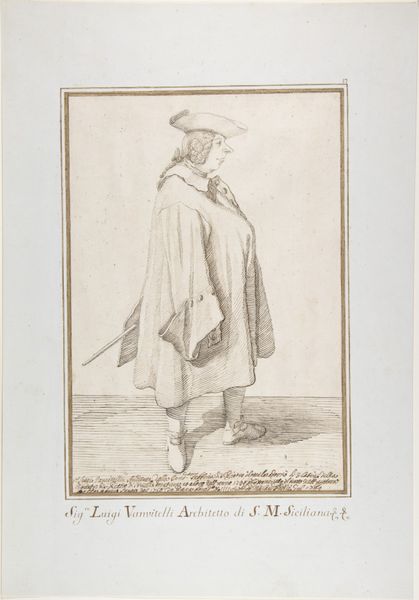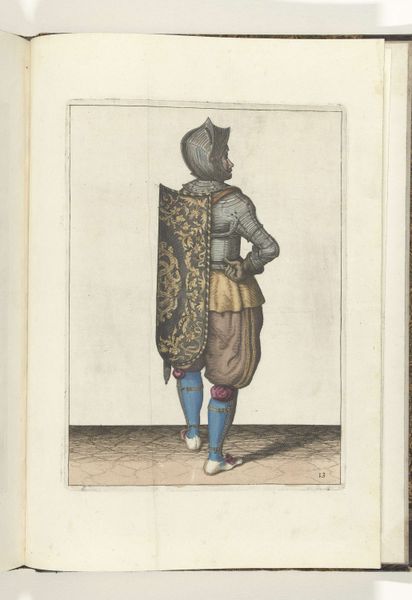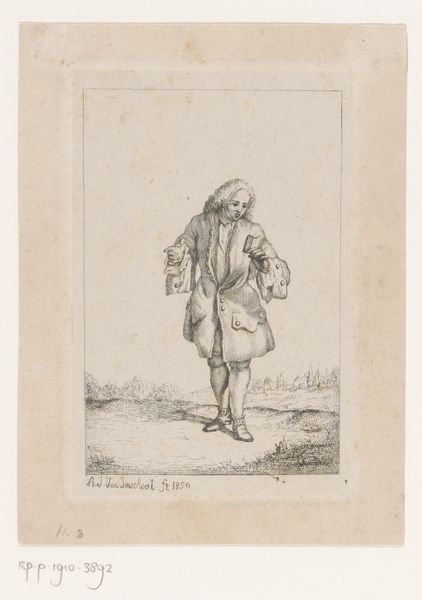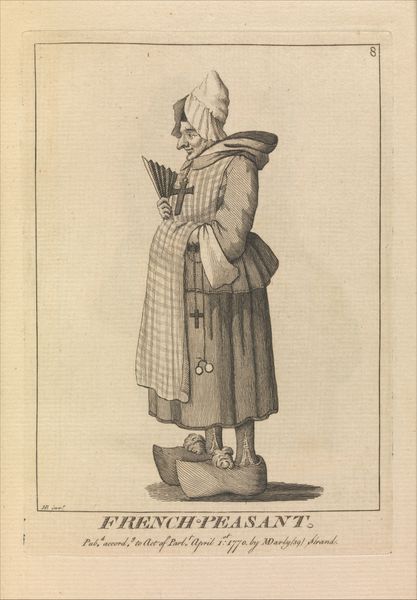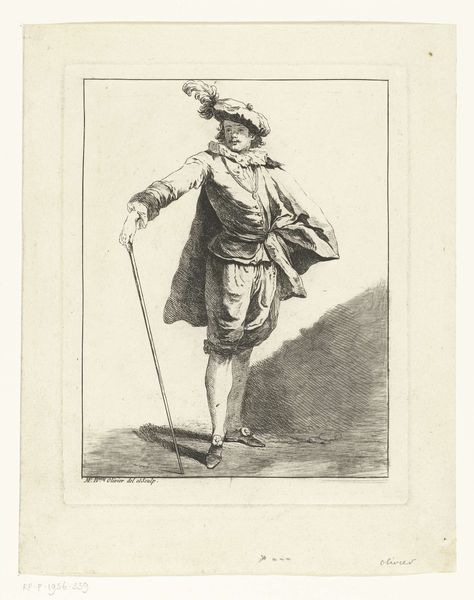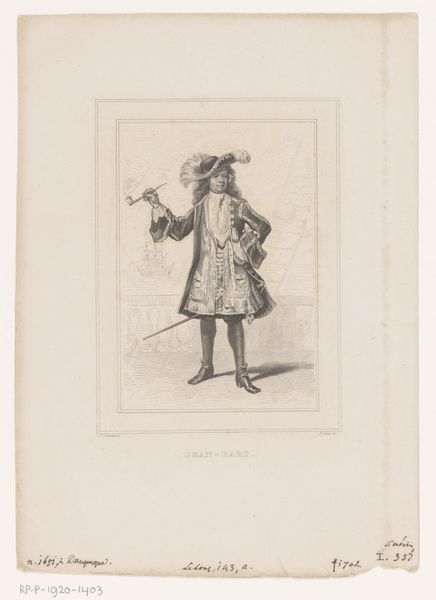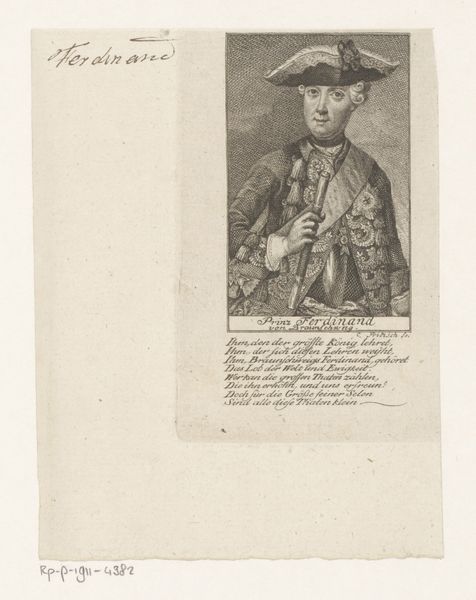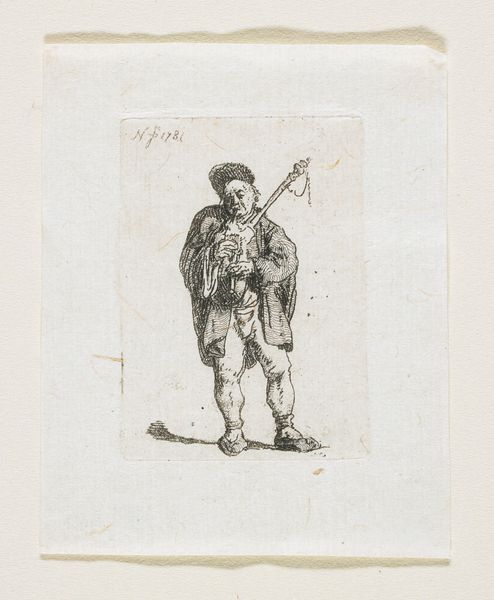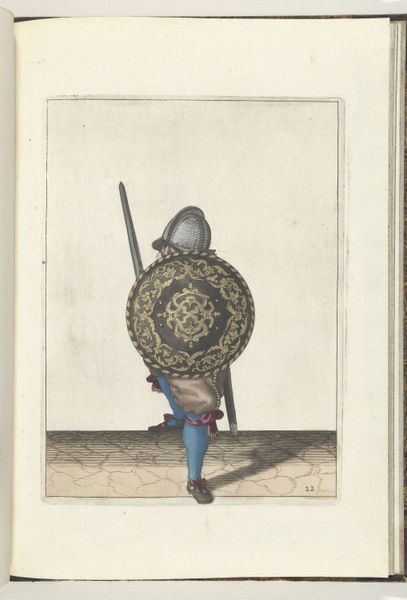
print, engraving
#
portrait
#
baroque
# print
#
figuration
#
genre-painting
#
engraving
Dimensions: height 10 mm, width 52 mm, height 198 mm, width 155 mm
Copyright: Rijks Museum: Open Domain
Editor: Here we have David Herrliberger's "Kunsthandelaar," from 1749. It's an engraving, currently housed in the Rijksmuseum. The figure appears almost like a caricature. I’m struck by the rather overt way this "art dealer" is presented to us. What is your reading of the work? Curator: Well, this print provides us a window into the 18th-century art market, the rise of the dealer as a figure. He’s not just selling art; he’s performing a role, consider that. Editor: Performing a role? Curator: Indeed. Look at how he carries the painting, like a sign, advertising his wares directly. The text, even, tells us someone dares to sell paintings. How does that wording strike you? Editor: Almost cheeky. Like there's something a bit audacious about the act of selling art so openly. Curator: Exactly! It reflects a shifting social landscape where art was transitioning from private patronage to a more public commodity. Herrliberger seems to be commenting on, perhaps even satirizing, this emerging figure of the art dealer. We can imagine the different audiences reacting to it: the established elite, aspiring middle classes. Editor: So, this seemingly simple print is actually reflecting some fairly significant social and economic shifts happening at the time? I never would have guessed it. Curator: Absolutely! It shows how prints played a part in circulating ideas about art and its place in society. Prints democratized images, creating opportunities for commentary and critique. Editor: I’ve certainly got a different appreciation for these kinds of works. Thanks for sharing this perspective.
Comments
No comments
Be the first to comment and join the conversation on the ultimate creative platform.
